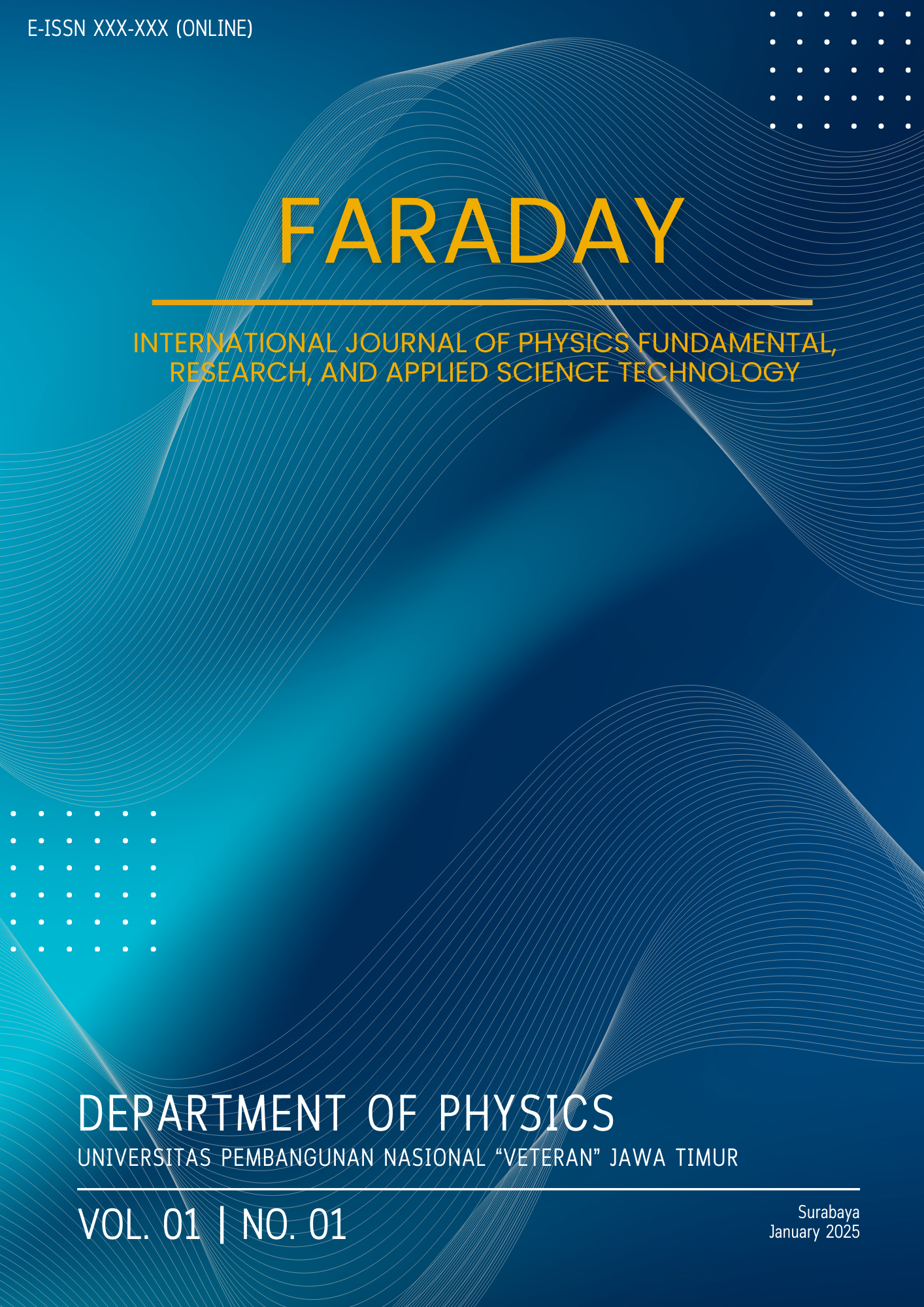Comparison of Stress and Deformation Distribution in Steel and Cobalt Chromium Materials for Femoral Bone Implants using Computational Biomechanics Analysis
DOI:
https://doi.org/10.33005/faraday.v1i1.3Keywords:
Implant bone femur, biomechanics, Finite Element Method, material Alloys, material Cobalt Chromium AlloysAbstract
This study analyzes the mechanical performance of femoral bone implants using two types of materials, namely Alloys and Cobalt Chromium Alloys, as well as two variations in implant length (72 mm and 24 mm, and 80 mm and 20 mm). Simulation was conducted using the Finite Element Method (FEM) to evaluate mechanical parameters, such as directional deformation, equivalent stress, maximum principal stress, and minimum principal elastic strain. The analysis results show that the Cobalt Chromium Alloys material has smaller deformation compared to the Alloys, indicating better stiffness and load-bearing capacity. However, the maximum principal stress value is higher in Cobalt Chromium Alloys, indicating a greater risk of stress concentration. Meanwhile, a longer implant length shows a more even stress distribution compared to a shorter length. This study provides important insights into the influence of material and implant length on its mechanical performance, and can serve as a basis for designing optimal implants for specific medical needs
Downloads
References
Alemayehu, D.-B., & Jeng, Y.-R. (2021). Three-dimensional finite element investigation into effects of implant thread design and loading rate on stress distribution in dental implants and anisotropic bone. Materials, 14(22), 6974.
Amalraju, D. (2012). Mechanical Strength Evaluation Analysis of Stainless Steel and Titanium Locking Plate for Femur Bone Fracture. 3.
Fauziyah, N. A., Hidayah, E. N., Pratapa, S., & Wardhani, P. C. (2025). Thermomechanical Properties from Polyethylene Glycol/Hydroxyapatite Composites Under Cryogenic Conditions Using Dynamic Mechanical Analysis. Under Review BioResources.
Fauziyah, N. A., Hilmi, A. R., Fadly, T. A., Asrori, M. Z., Mashuri, M., & Pratapa, S. (2019). Dynamic tensile and shear storage moduli of PEG/silica-polymorph composites. Journal of Applied Polymer Science, 136(17), 47372. https://doi.org/10.1002/app.47372
Gasik, M., Lambert, F., & Bacevic, M. (2021). Biomechanical properties of bone and mucosa for design and application of dental implants. Materials, 14(11), 2845.
Huang, G., Li, Y., Zhang, Y., Wen, W., Zhao, C., & Guo, X. (2025). Overcoming Challenges in Plant Biomechanics: Methodological Innovations and Technological Integration. Advanced Science, 12(10), 2415606. https://doi.org/10.1002/advs.202415606
Manna, A., Dixit, A., Kumar, A., & Pathak, D. K. (2024). Biomechanical Characterization and Numerical Simulation of Hard and Soft Human Tissues. In A. Dixit, A. Kumar, & D. K. Pathak (Eds.), Additive Manufacturing for Biomedical Applications (pp. 243–258). Springer Nature Singapore. https://doi.org/10.1007/978-981-97-5456-4_13
Medina-Galvez, R., Cantó-Navés, O., Marimon, X., Cerrolaza, M., Ferrer, M., & Cabratosa-Termes, J. (2021). Bone stress evaluation with and without cortical bone using several dental restorative materials subjected to impact load: A fully 3D transient finite-element study. Materials, 14(19), 5801.
Rizki, M. N., Fikri, A., Faisal, F., & Nanda, R. A. (2023). ANALISIS VON-MISES STRESS, STRAIN, DAN TOTAL DEFORMASI PADA PELAT IMPLAN METATARSOPHALANGEAL (MTP) DENGAN MATERIAL TI-6AL-4V MENGGUNAKAN FINITE ELEMENT METHOD. Jurnal Teknologi Kimia Unimal, 12(2), 178–189. https://doi.org/10.29103/jtku.v12i2.12971
Senthil, R. (2024). Bone implant substitutes from synthetic polymer and reduced graphene oxide: Current perspective. The International Journal of Artificial Organs, 47(1), 57–66. https://doi.org/10.1177/03913988231216572
Wu, C., Xu, Y., Fang, J., & Li, Q. (2024). Machine Learning in Biomaterials, Biomechanics/Mechanobiology, and Biofabrication: State of the Art and Perspective. Archives of Computational Methods in Engineering. https://doi.org/10.1007/s11831-024-10100-y
Downloads
Published
Issue
Section
License
Copyright (c) 2025 hamizatul hardiantati, Widya Rachma Wulan, Fajar Timur, Nailul Hasan, Nur Aini Fauziyah

This work is licensed under a Creative Commons Attribution 4.0 International License.














